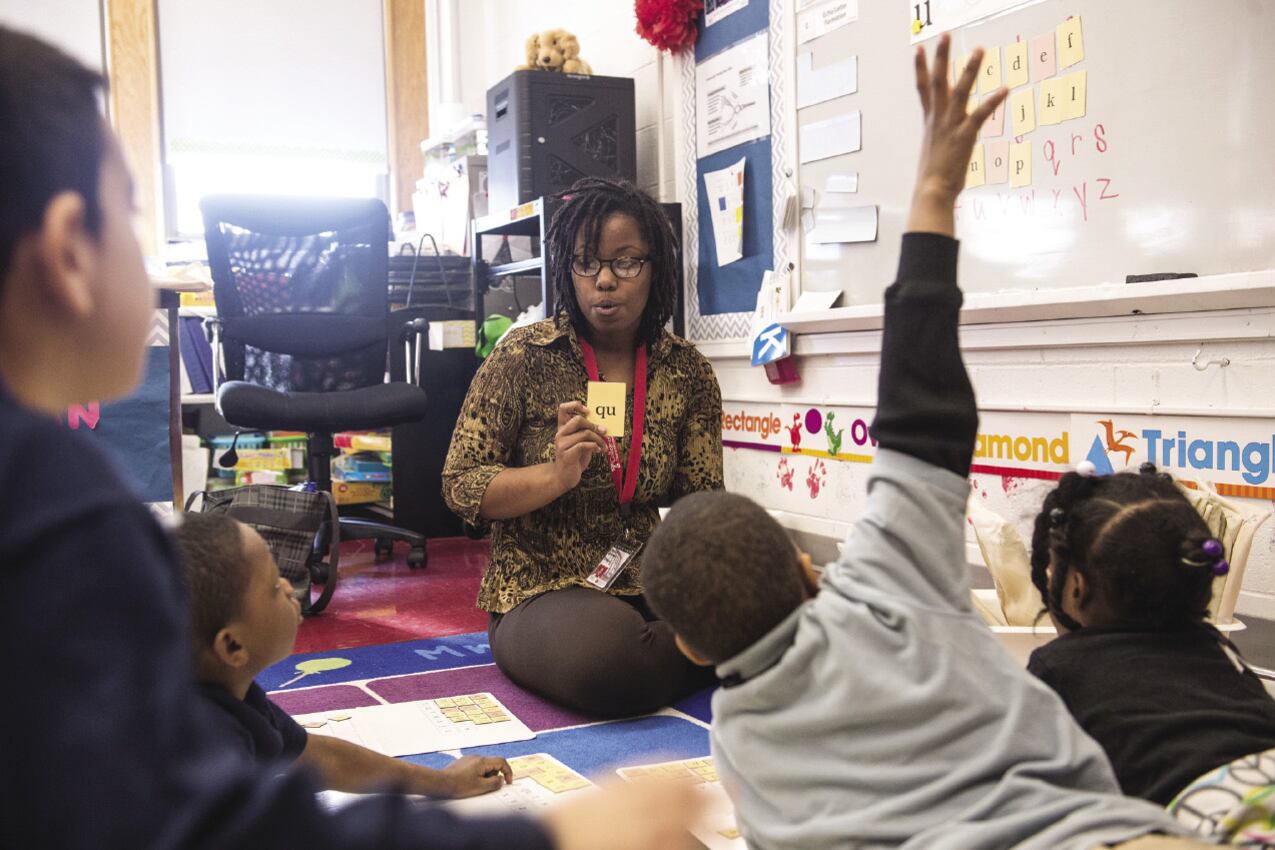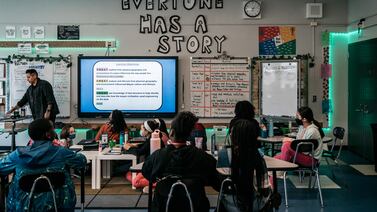A coalition of educators and advocates urged school districts across Pennsylvania on Tuesday to use federal stimulus money on initiatives to boost racial diversity among the state’s teaching ranks.
Coalition member Sharif El-Mekki, founder of the Center for Black Educator Development in Philadelphia, recently began a national campaign to improve the number of Black teachers after finding only 2% of U.S. teachers are Black men.
“All students benefit from increased teacher diversity,” El-Mekki said Tuesday during the group’s virtual news conference, sponsored by the ESSA Leadership Learning Community, or ELLC. “They are better prepared to participate as informed and engaged citizens in an inclusive national civic culture and increasingly complex world. Pennsylvania’s teacher pipeline begins at the K-12 level and extends through college, certification, and entrance into the teacher profession. The pipeline ends at teacher retention. We must examine all levels of Pennsylvania’s teacher pipeline as it loses teachers of color at each stage.”
The host of Tuesday’s virtual event, Urban League of Greater Pittsburgh President and CEO Esther Bush, said the Pennsylvania coalition seeks more funding in three areas: building lasting and equitable systems of teaching and learning; safely reopening schools for all students; and addressing pre- and post-pandemic unfinished learning.
Bush noted that 184 school districts in Pennsylvania have no teachers of color.
According to the group, Pennsylvania has one of the highest disparities in the nation between students and teachers of color. For almost a decade, the percentage of teachers of color has been below 6% while the percentage of students of color has increased from approximately 30% to 36%. Also, male teachers of color comprise only slightly more than 1% of Pennsylvania teachers.
School District of Philadelphia Chief Talent Officer Larisa Shambaugh and Pittsburgh Public Schools Superintendent Anthony Hamlet said their districts are committed to using American Rescue Plan funds to continue to build programs and partnerships to prepare more diverse students to enter the teaching profession.
In March, Philadelphia Superintendent William Hite announced plans to spend nearly $1.3 billion from the relief money on building repairs and upgrades, academic recovery programs, and programs and personnel to help students deal with trauma resulting from the pandemic. He called the money “unprecedented,” but cautioned that the district is limited in what it can do with the funds, which will run out in three years.
When the district later announced that it was seeking to recruit up to 900 teachers, school officials said they would like to see their teacher workforce mirror the district’s student demographics. More than 70% of the district’s students are Black and Latino, yet district teachers are predominantly white. Black teachers make up 24.5% of the district’s 9,100 teachers, while white teachers make up 67% of the teacher population, according to data on the district’s website.
Studies show that having culturally relevant educators improves scholastic outcomes for all demographic groups while also alleviating teacher shortages. But leaders who spoke at Tuesday’s news conference said targeted funding is critical for that to happen.
“The American Rescue Plan for Education offers an incredible opportunity for schools and districts to invest in education diversity efforts as school leaders can use these funds to recruit and hire educators of color and mentor students of color as they consider becoming educators,” said Pennsylvania Deputy Secretary of Higher Education Tanya Garcia. “The Pennsylvania Department of Education is working with educators and partners across the commonwealth to support this work and the development of competencies needed to provide culturally relevant and sustaining instruction.”
Cheyney University, a historically Black university in Delaware County, is partnering with PDE and Community College of Philadelphia under a statewide initiative called Aspire to Educate. In Cheyney’s version, students can attend community college for two years and then transfer to Cheyney for their final two years to earn their degree.
“The idea is to get teachers of color back into the pipeline,” said Cheyney President Aaron A. Walton. “We are also attracting people who left college before graduation and may want to come back and switch to a teaching career. In both cases, we are reestablishing the pipeline. These partnerships among educational institutions make this program work.”
Pennsylvania Association of Colleges and Teacher Educators (PACTE) President Gwen Price cited programs at Temple, LaSalle, Edinboro and Slippery Rock Universities that have formed teacher development partnerships, including dual enrollment programs, with area school districts.
“We must find ways to recruit candidates that are representative of a student population that will endeavor to serve,” Price said. “The recruitment must start early, defining the pivotal role that educators play in the development of young minds, redefining the perception of public education as a career, finding financial incentives and support to make the pathway to becoming a teacher more enticing and removing the barriers known to disproportionately keep underrepresented groups from entering the field.”
All of the speakers at Tuesday’s virtual event are members of the Pennsylvania Educator Diversity Consortium. Speakers represented the following agencies and organizations: Pennsylvania Department of Education, Urban League of Greater Pittsburgh, Center for Black Educator Development, School District of Philadelphia, Pittsburgh Public Schools, Cheyney University of Pennsylvania, University of Pittsburgh, and the Pennsylvania Association of Colleges and Teacher Educators.
“We need to take seriously the implications of our diverse students never seeing a teacher who looks like them in their schooling experience,” said Valerie Kinloch, the Renee and Richard Goldman Dean at the University of Pittsburgh. “We can’t take for granted that because you are a person of color means that you are innately culturally responsive, and since our white teachers are in the majority, we need to ensure that they have the tools they need to educate students of color and white students for a diverse world.”






